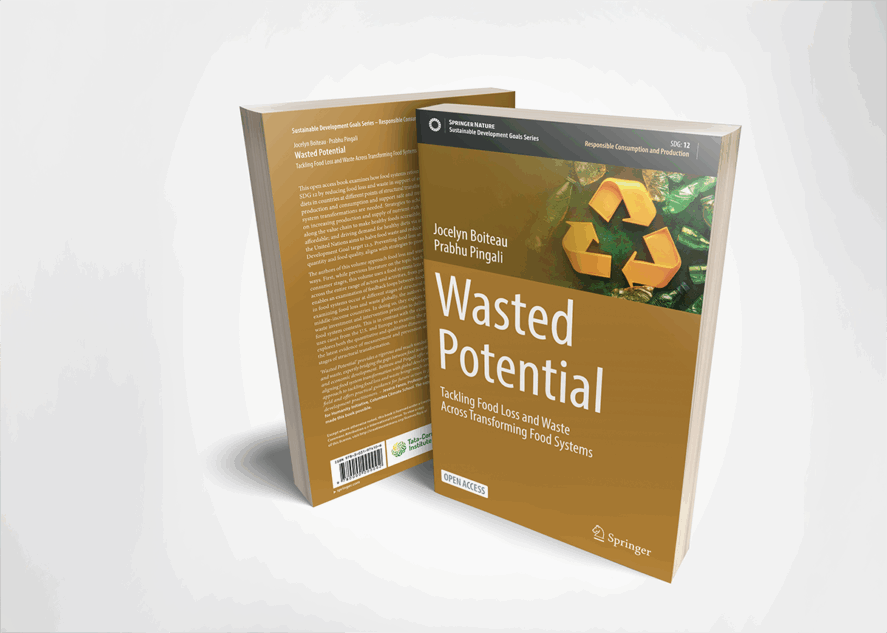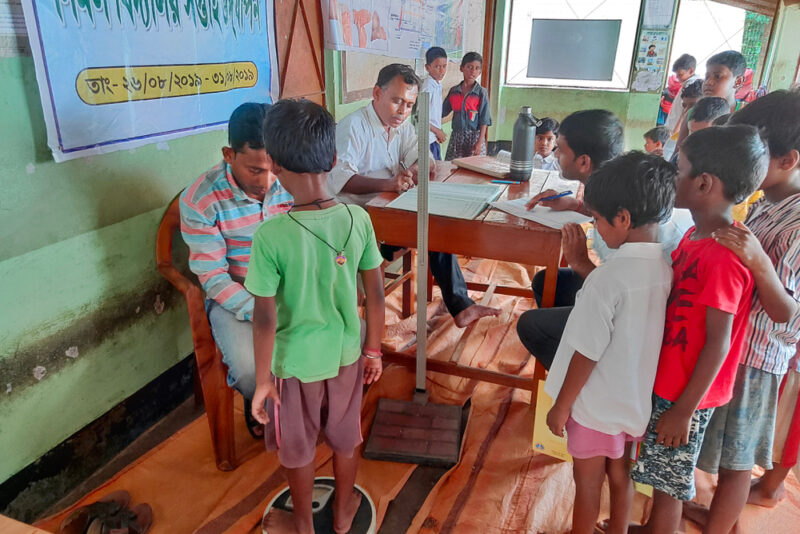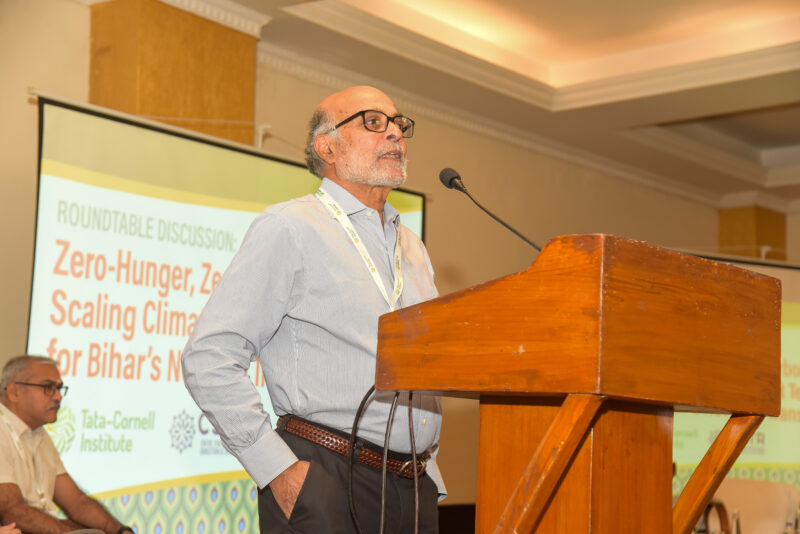New Book Tackles Food Loss and Waste

Each year, about 32% of the food produced across the world is lost or wasted. Tackling food loss and waste has been on the global agenda for decades, with policymakers citing it as a contributing factor to issues like food insecurity and environmental degradation. Despite this attention, food loss and waste remain a challenge across the world.
A new book from researchers at the Tata-Cornell Institute for Agriculture and Nutrition (TCI) provides an evidence-based framework for addressing food loss and waste as a means to improve access to healthy diets. In “Wasted Potential: Tackling Food Loss and Waste Across Transforming Food Systems,” TCI alumna Jocelyn Boiteau and Director Prabhu Pingali set forth a policy agenda that builds demand for diverse, nutritious foods in order to incentivize food loss and waste reduction while mitigating tradeoffs between food security, environmental sustainability and socioeconomic welfare. In addition to stimulating demand for safe and nutritious foods, they call for investments in value-adding innovations like processing, packaging and cold chain infrastructure, as well as public infrastructure and financial services that improve market access.
“Reducing food loss and waste is crucial to building sustainable food systems that support healthy diets, especially in developing countries,” Pingali said. “But our efforts to address loss and waste must be holistic, prioritizing food security while minimizing tradeoffs with our environmental and socioeconomic objectives.”
While most previous works on food loss and waste focused on loss at the retail and consumer levels, Boiteau and Pingali utilize a food systems approach that encompasses the full set of activities along food supply chains. This comprehensive approach enabled them to identify potential tradeoffs and synergies with other goals.
“Food loss and waste occur at every stage of the value chain, from the farmgate to the consumer’s plate,” Boiteau said. “The food systems approach allows us to understand the cascading effects and feedback loops that occur across the value chain, helping to identify tradeoffs and avoid exacerbating risks for those who are already disadvantaged.”
As an example of a potential tradeoff involved with reducing food waste, Boiteau said that food packaging can help to reduce the loss of perishable foods and make them more accessible to consumers but also have a negative environmental impact. Packaging can also make food more expensive, potentially making some products inaccessible for low-income consumers.
“Wasted Potential” treats food loss and waste as a global issue but has a particular emphasis on low- and middle-income countries, which have been ignored in much of the previous literature on the subject. Boiteau and Pingali pay particular attention to addressing loss and waste as countries develop economically and their food systems change.
“As such countries develop, they undergo changes related to agricultural productivity, urbanization and industrialization, which impacts their food systems, including how, where and what type of food is lost or wasted,” Boiteau said. “We contextualized food loss and waste within different settings to identify both their unique and similar features, which gives us a better understanding of how to address loss and waste within those contexts.”
“Wasted Potential” also highlights important issues with the data used to monitor food loss and waste. In particular, the lack of a single, agreed-upon definition for food loss and waste makes it difficult to compare data on both the extent of the issue and the effectiveness of reduction strategies. Boiteau and Pingali also highlight the need for more robust data collection and the alignment of data collection and estimation approaches with sustainable food systems objectives.
“To achieve better data collection, we need to agree on what we mean by ‘food loss and waste,’ so that we can identify the specific data we need and the appropriate methods to fill evidence gaps,” Boiteau said. “Central to this is the need for a common core set of indicators that are comparable and can be used to track changes across value chain stages and enable meaningful comparison across contexts.”
Reducing food loss and waste is a target of the Sustainable Development Goals, which were adopted by the United Nations in 2015 to address global challenges like poverty, hunger and inequality. Sustainable Development Goal 12, which aims to achieve “responsible consumption and production,” aims to halve global per capita food waste at the retail and consumer levels and reduce loss along supply chains by 2030.
“Wasted Potential” was published by Springer as part of its Sustainable Development Goals Series. It is available to download through open access.
Featured image: “Wasted Potential” provides an evidence-based framework for addressing food loss and waste as a means to improve access to healthy diets. (Photo illustration by Bill Akunevicz Jr., DragonFish Studio)





